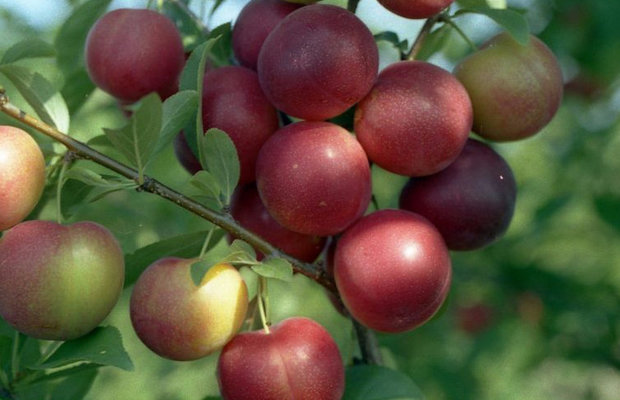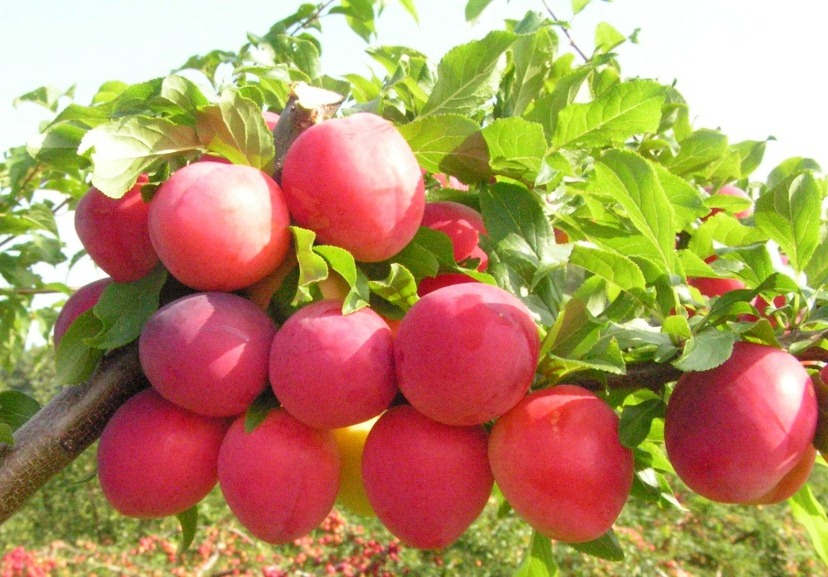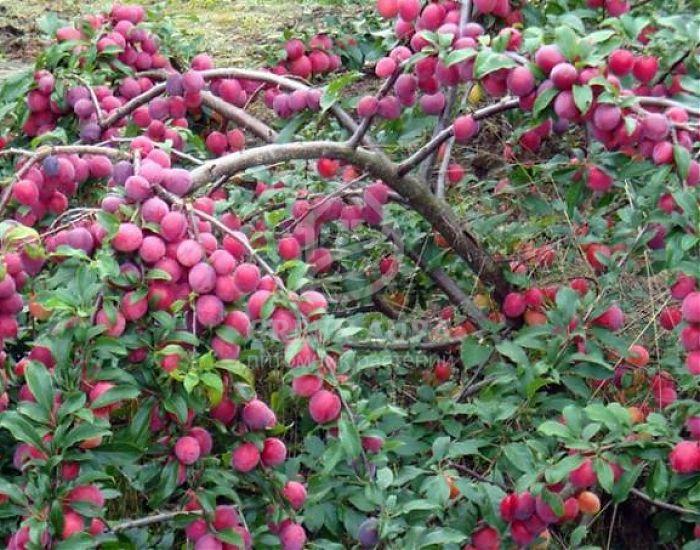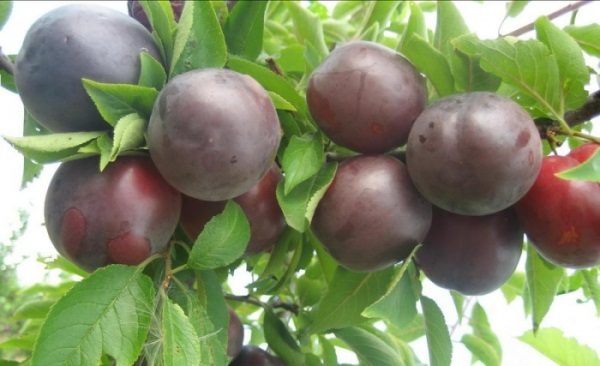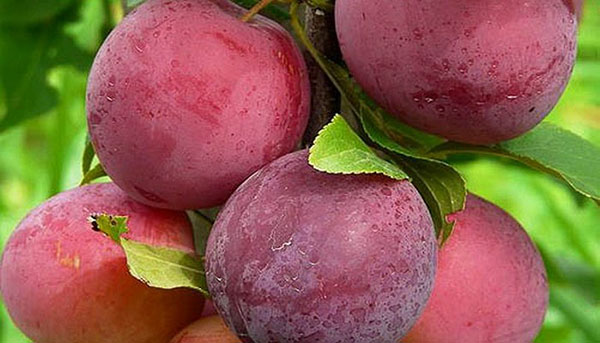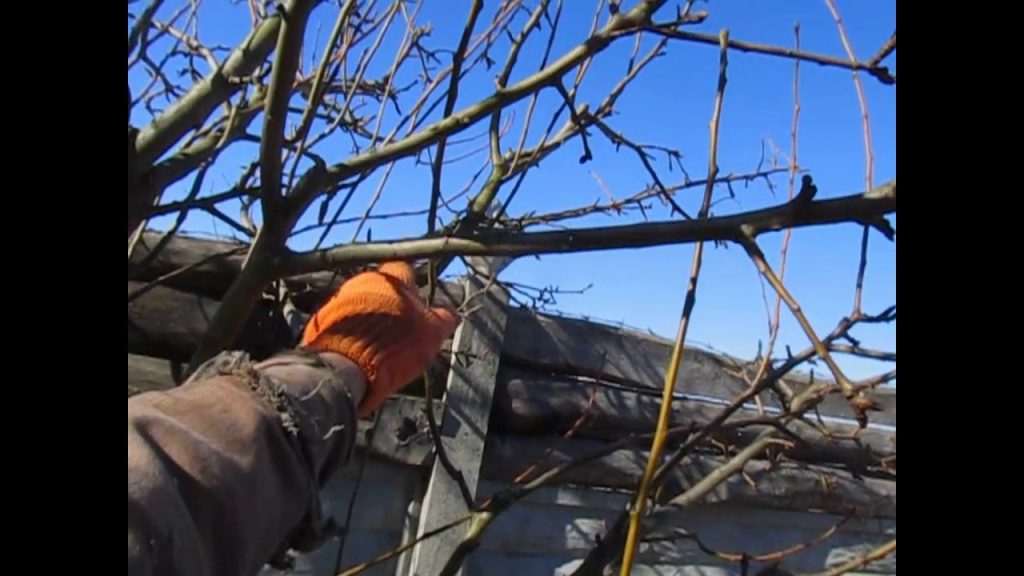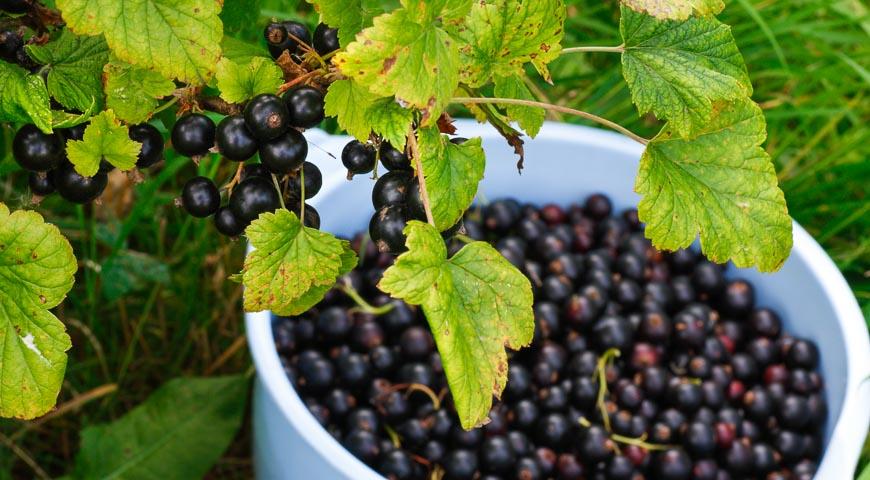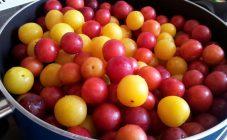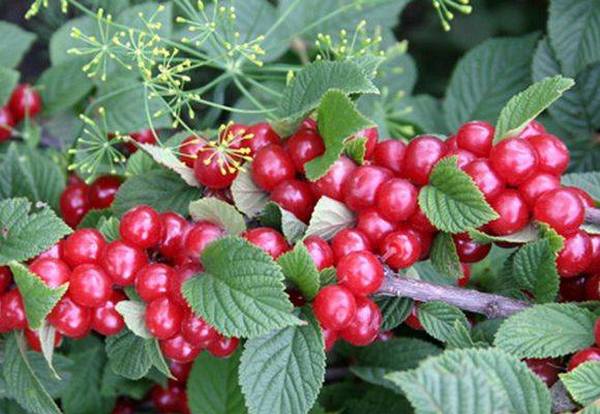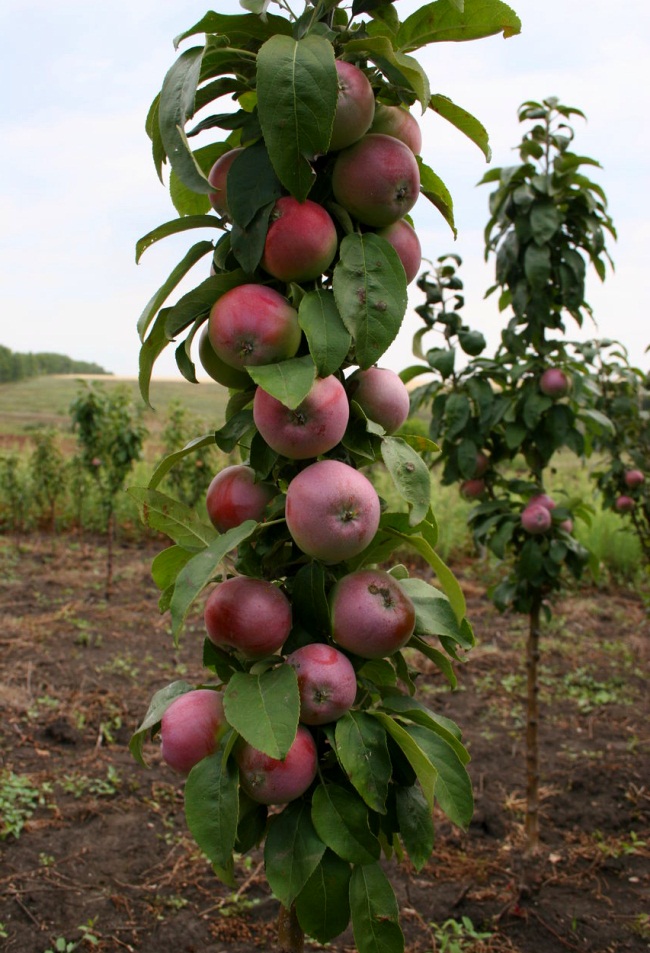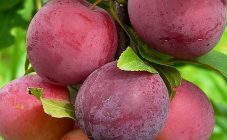Content:
Cherry plum is essentially a wild version of the cultivated plum. Its other names are spreading plum or cherry-like plum. The tree belongs to the genus Plum. Got spread in the Caucasus, Iran and Asia Minor.
Brief information about culture
The fruit crop is demanding on light, drought tolerant and prefers soils with neutral acidity. An adult cherry plum can reach 14 meters, but this is only in the southern regions, in the north and in the middle lane, the tree height will be 4-5 meters. In some cases, the tree is more like a shrub. The average life of a fruit crop is 50 years.
Cherry plum can be both single-barreled and multi-barreled. The trunk reaches half a meter in diameter. The tree branches well and its crown is dense, spherical-spreading in shape. The root system is located more on the surface, although on soils with a loose structure it can go up to 11 meters deep. But on more dense roots do not fall below 2 meters. They often go beyond the crown of the tree, spreading within a radius of 10 meters. Basal growth is rare.
The leaves of the tree are dark green, and in the fall they just turn yellow. The flowers are either white or have a pinkish tint, their size does not exceed half a centimeter. Cherry plum blooms even before the foliage appears or at the same time, around the beginning of May. In rare cases, flowering is observed in the fall.
Cherry plum trees bear fruit for 3 years after planting. The fruits ripen very quickly. In wild specimens, the fruits are small, weighing 4-6 g, and in cultivated specimens they reach about 50 g. They ripen in late summer or early autumn.
Cherry plum for the Moscow region - the best varieties
Cherry plum successfully crosses with plum, which has good frost resistance. Thus, varieties of cherry plum suitable for the conditions of the Moscow region were bred, among which there are hybrids.
The culture can be conditionally divided into several groups, which are a kind of cherry plum from the southern regions. For cold climates, a hybrid based on Chinese plum was developed, which served as the basis for new varieties that are resistant to frost. Today this group of varieties is called "Russian plum". In fact, this is the plum, which has a peculiar sour taste.
The best varieties of cherry plum for the Moscow region are presented below.
Ruby
Cherry plum hybrid, suitable for growing in the Moscow region. The variety tolerates drought well and is very frost resistant. Has an average ripening period. It happens that it bears fruit unstably, as it depends on weather conditions.
The tree itself has a spreading dense crown and an average height. Fruits are on average 30-35 g, dark red. The pulp is juicy, sweet with a sour taste.
Early
The variety has good frost resistance and early ripening. The fruits are large enough, red-orange in color.
The trees are of low height, and fruiting is stable and begins at 3 years old. Cherry plum is a fast-growing product of Chinese selection. Requires a number of pollinators.The pulp is yellow, pleasant and juicy. In general, this is a delicious variety of cherry plum, which is perfect for fresh consumption.
Kuban comet
Perfect for small areas. It tolerates even severe frosts well, but is demanding on moisture. The tree itself is compact in size, has a good yield, reaching 40 kg per tree per season.
The fruits are colored red, but their flesh is yellowish. Weight within 30 g. The bone is difficult to detach from the pulp. They have a sour taste, are good for processing, but can be eaten fresh. This cherry plum variety is suitable for cultivation in the Saratov region.
Traveler
Serves as a pollinator for many varieties, but at the same time it has a high yield of up to 40 kg per tree. Resistant to frost and lack of watering. Cherry plum bears fruit at 3 years of age, has an average size and a standard crown. Refers to crops of medium ripening. Fruits have a mass of 30 g. The pulp is dark yellow, and it has an unusual banana flavor.
Mara
Self-fertile cherry plum for central Russia. The Mara variety is perfectly adapted to the given climatic conditions. It is resistant to frost and typical diseases.
The crown is spherical, and the tree reaches a height of 3 meters. Due to the shape of the crown, regular pruning is required. The fruits ripen early and do not fall off the tree. The skin of the cherry plum fruit has a bright orange-yellow color. The taste is pleasant, fibrous. Probably, this is the sweetest variety of cherry plum near Moscow.
Tent
Cherry plum Tent has a small tree, but begins to bear fruit at the 4th year of life. The crown is round in shape and directed downward, like a tent. Fruits are large up to 40 g. The pulp is yellow, sweet in taste, but with sourness. Fruit weight ranges from 40 g.
The description of the cherry plum variety Shater includes information about the early ripening period and high resistance to cold. The disadvantage is that the variety is not self-pollinating.
Found
The variety is classified as a medium-ripening crop. The variety's resistance to frost is high, and it is also well able to adapt to temperature extremes.
The tree is medium in size and has a round, slightly flattened crown. The average fruit weight is about 35 g. The pulp is yellow, the taste is pleasant with sourness. Has good early maturity, bears fruit from 3 years old and has good yield indicators.
Other famous varieties
In addition to those presented above, many gardeners of the Moscow Region cultivate the following varieties:
- Gift to St. Petersburg;
- Monomakh;
- Huck;
- Timiryazevskaya;
- Gold of the Scythians.
Cherry plum pests
Like all fruit trees, cherry plums have their own diseases and pests. This garden plant is slightly susceptible to various diseases, but it can become infected from neighbors in the garden.
The main harmful insects:
- sawflies;
- apple scale insects;
- copper or black gold beads;
- plum moths.
In order to protect your garden from their effects, it is necessary to carry out processing with special means such as Iskra, Fitoverm, Akarin. Their use is allowed no more than once a month during the season.
In early spring, it is worth sprinkling the garden with a urea solution prepared at the rate of 700 g per 10 liters of water. Bordeaux liquid or another preparation that contains copper is also suitable. To avoid burns on the leaves, the treatment is carried out before bud break. This will protect cherry plum and other plants in the garden from fungal attack and other diseases.
Diseases such as milky shine and clasterosporium are common. They arise before fruit appears. During the fruiting period itself, cherry plum is affected by monoliosis, or gray rot. If the cherry plum hangs close to each other, the disease spreads quickly.
They fight diseases by removing diseased parts of the tree, and for prevention they use means such as Bordeaux liquid and timely pruning.
Gardeners' mistakes when growing cherry plum in the Moscow region
When growing cherry plum, the climate outside Moscow imposes its own conditions. Many gardeners make a number of mistakes when cultivating this crop. The main points to consider are the following:
- You should not choose a place for planting that is in the shade or exposed to winds. Cherry plum loves good lighting and reliable protection from the wind.
- It is recommended to plant cherry plum not in autumn, but in spring, by mid-April.
- The tree does not tolerate acidic and alkaline soils, the soil must be well fertilized with organic matter.
- Excessive watering is not recommended, the culture is sensitive to the presence of excess moisture in the soil.
- Heavy pruning of the crown will result in sunburn or freezing.
If you follow all the rules and recommendations, then you can quite successfully grow cherry plum in the middle lane. Moscow and the Moscow climate are well suited for hybrid varieties of this southern tree.

